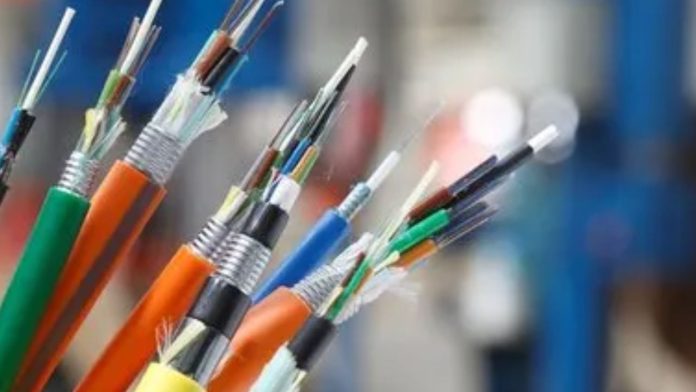The acronym ADSS represents “All-Dielectric Self-Supporting.” Thanks to their special construction that eliminates the need for a steel center strength member, ADSS aerial fiber optic cables can be installed on utility poles above ground without posing a risk of electrical conductivity. Using the same infrastructure as power lines, ADSS cables are strung along utility poles that are already in place.
Because of their self-supporting construction, they don’t need a separate messenger wire to function. Usually, the cable is installed by being slung to the pole and left to dangle freely between poles. High tensile strength, resilience to ice and wind, ease of installation, and appropriateness for long-span applications are just a few benefits of using ADSS cables.
They are an affordable option for aerial fiber optic installations because they are lightweight and don’t need to be grounded. The design of the adss aerial fiber optic cable, the number of fibers, and the installation circumstances can all affect the maximum span length of ADSS cables. In general, ADSS cables are appropriate for both short- and long-distance deployments because they can span between utility poles for up to several kilometers.
Installation Process Of ADSS Aerial Fiber Optic Cables
A separate messenger wire is not necessary because ADSS aerial fiber optic cables are self-supporting due to their special composition. Because of the dielectric (non-metallic) center strength element used in their design, these cables are both non-conductive and mechanically strong. This provides an affordable long-distance data transmission solution.
1. Pre-Installation Process
Route Planning
Make a detailed examination of the installation route, noting any potential impediments, the distance between poles, and the state of the infrastructure. Carefully plan the cable path, taking into account things like building clearance, pole spacing, and topography features.
Cable Selection
Based on installation requirements, including fiber count and environmental considerations, select the suitable ADSS cable. Make sure the cable you choose satisfies the requirements for the intended application and takes into account the anticipated bandwidth requirements.
Safety Measures
During the installation procedure, put safety first. Make sure that the installation crew has the proper tools and personal protective equipment (PPE). Respect safety procedures, such as operating at heights and locking down the workspace, to avoid mishaps.
2. Installation Process
Pole Preparation and Cable Lashing
Verify the utility poles’ structural soundness and ability to hold the ADSS cable by inspecting them. To ensure a safe and clean surface for lashing the new wire, scrub the poles of any debris and old cables. Fasten the ADSS cable to the poles to start the installation process.
At regular intervals, secure the cable with the required lashings and attachments to guarantee the right tension and clearances. Observe the recommendations provided by the cable manufacturer regarding hardware selection and lashing methods.
Span Length Considerations
Certain span length restrictions apply to ADSS cables due to design and environmental considerations. Follow the suggested span lengths that the cable manufacturer recommends to avoid excessive sagging, which can deteriorate signal integrity and shorten the cable’s lifespan.
Clearance and Support
Make sure there is enough space between the cable and any nearby structures, including trees and buildings. When extra support is required, use suspension clamps and brackets to make sure the cable stays in place and is secure.
Splicing and Termination
Use fusion splicing procedures to join the ADSS cable sections if the installation calls for more than one segment. To maintain signal integrity and shield the fiber optic splices from the elements, terminate the cable ends with the proper connectors and enclosures.
3. Post-Installation Testing
Optical Testing
Utilize optical testing methods, such as optical time-domain reflectometer testing (OTDR testing), to identify potential issues, such as fiber breaks or attenuation spots, and to verify the signal’s quality. Optical testing provides helpful information about the functioning of the cable and aids in troubleshooting potential problems.
Documentation and Record Keeping
Measure the installed cable’s tension and sag to make sure it satisfies the standards. Keep thorough records of the installation, including test findings, splice spots, installation methods, and cable specs. Sufficient documentation guarantees a seamless operational process throughout time by facilitating future maintenance, repairs, and upgrades.
Sum Up
Careful planning, expert execution, and a strong emphasis on quality and safety are necessary for the installation of ADSS aerial fiber optic cables. It is impossible to exaggerate the significance of exact installation methods given that these cables enable high-speed data transmission and networking. Not only does a well-done installation ensure peak performance, but it also facilitates smooth information flow and supports future digital infrastructure.







